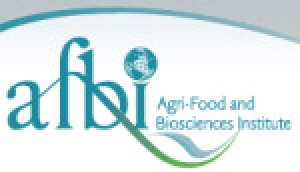Dairy Experts

The dairy industry in Northern Ireland faces growing uncertainty in several spheres including, subsidy payment levels and compliance conditions, global competition, price variability, consumer demand, carbon footprints, animal welfare, food safety, and the environment. Farmers can, nevertheless, reduce their exposure to these uncertainties by adopting production systems that are financially robust over a wide range of possible circumstances.
The Production Systems Evaluated
The model contains seventeen dairy system options. There are six seasonal grass silage based systems (i.e. where grass silage is the only winter forage used): these consist of three spring-calving systems with average milk production per cow of 5,000, 6,000 and 7,000 litres, and three autumn-calving systems with 6,000, 7,000 and 8,000 litre yields.
There are also three seasonal autumn calving systems that involve mixed forage diets (grass and maize silage) during the winter with 6,000, 7,000, and 8,000 litre yields.
Finally, there are eight non-seasonal calving confinement systems, four of these based on grass silage as the only forage with average annual production of 7,000, 8,000, 9,000, and 10,000 litres per cow, and four involving mixed forages (grass plus maize silage) with again 7,000, 8,000, 9,000, and 10,000 litre yields. It is assumed that cows in the non-seasonal confinement systems are housed for most of the time with very limited use of grazing.
Different combinations of silage, grazing and concentrate inputs are incorporated within the model for each of the seventeen systems. Milk supply pattern and quality are assumed to vary with calving date and diet. Cow size, calving interval, annual replacement rate, labour requirements per cow, and overhead costs per cow are also assumed to vary across the systems.
Typical Northern Ireland conditions are assumed for grazing management, genetic merit of cows, and grass and maize silage yield and quality. Finally, the model assumes that owned land, working capital, family labour, livestock housing and milk quota are available at levels typical of an average yielding 75 cow herd. Additional units of these resources can also be acquired at market prices if they increase farm income.
Model Results
Changes in Milk Prices
Assuming for modelling purposes annual average milk prices range from 16 to 24 ppl (a 20 per cent variation from a 20ppl baseline), with all other prices remaining at baseline levels, the optimal milk production system is consistently shown to be a moderate input-moderate output system.
That is, either a spring calving herd, yielding an average 7,000 litres per cow, or an autumn calving herd, fed grass and maize silage, yielding an average 8,000 litres per cow.
Calving date appears to be not that important as differences in profitability between these two systems are found to be relatively modest. These 7,000 to 8,000 litre moderate input-moderate output systems combine a housed period over the winter months with a definite grazing period over the summer months, and should not be confused with 7,000 to 8,000 litre non-seasonal calving confinement systems that, due to their relatively high concentrate use and high capital requirements, can reasonably be described as high input-moderate output systems.
Finally, although systems that incorporate maize silage are optimal in some scenarios, the difference in profitability compared to grass silage only systems is relatively small and largely depends on the farm’s ability to grow a good maize crop.
Changes in Concentrate Prices
When concentrate prices are allowed to vary by plus or minus 20 per cent from the assumed baseline prices, with all other prices remaining at baseline levels, the optimal milk production system is still a moderate input-moderate output system. However, although the optimal systems remain relatively stable as concentrate prices vary, farm incomes do change significantly.
Changes in Fertiliser Prices
When fertiliser prices are allowed to vary by plus or minus 20 per cent from the assumed baseline prices, with all other prices remaining at baseline levels, the optimal milk production system is again a moderate input-moderate output system. Moreover, farm incomes also remain relatively stable even under this level of variation in fertilizer prices.
Summary
The results from this research indicate that the optimal dairy system for a typical Northern Ireland farm is one that is somewhere between the extremes of those systems adopted in the US and NZ.
Moderate input-moderate output milk production systems (i.e. 7,000 to 8,000 litre yields) are shown to be financially robust over a wide range of milk prices, concentrate prices, and fertiliser prices. Low input-low output (NZ style) and high input-high output (US style) systems are found to be rather less versatile.
Low input-low output systems perform better financially, relative to higher input-output systems, when milk prices are low, concentrate prices are high, and fertilizer prices are low. In contrast, high input-high output systems perform better financially, relative to lower input-output systems, when milk prices are high, concentrate prices are low, and fertilizer prices are high.
Nevertheless, whether the prevailing economic conditions for milk production are assumed to be very favourable or very challenging, moderate input-moderate output systems are found to be either optimal, or close to optimal.
The research was funded by AgriSearch and DARD.






















